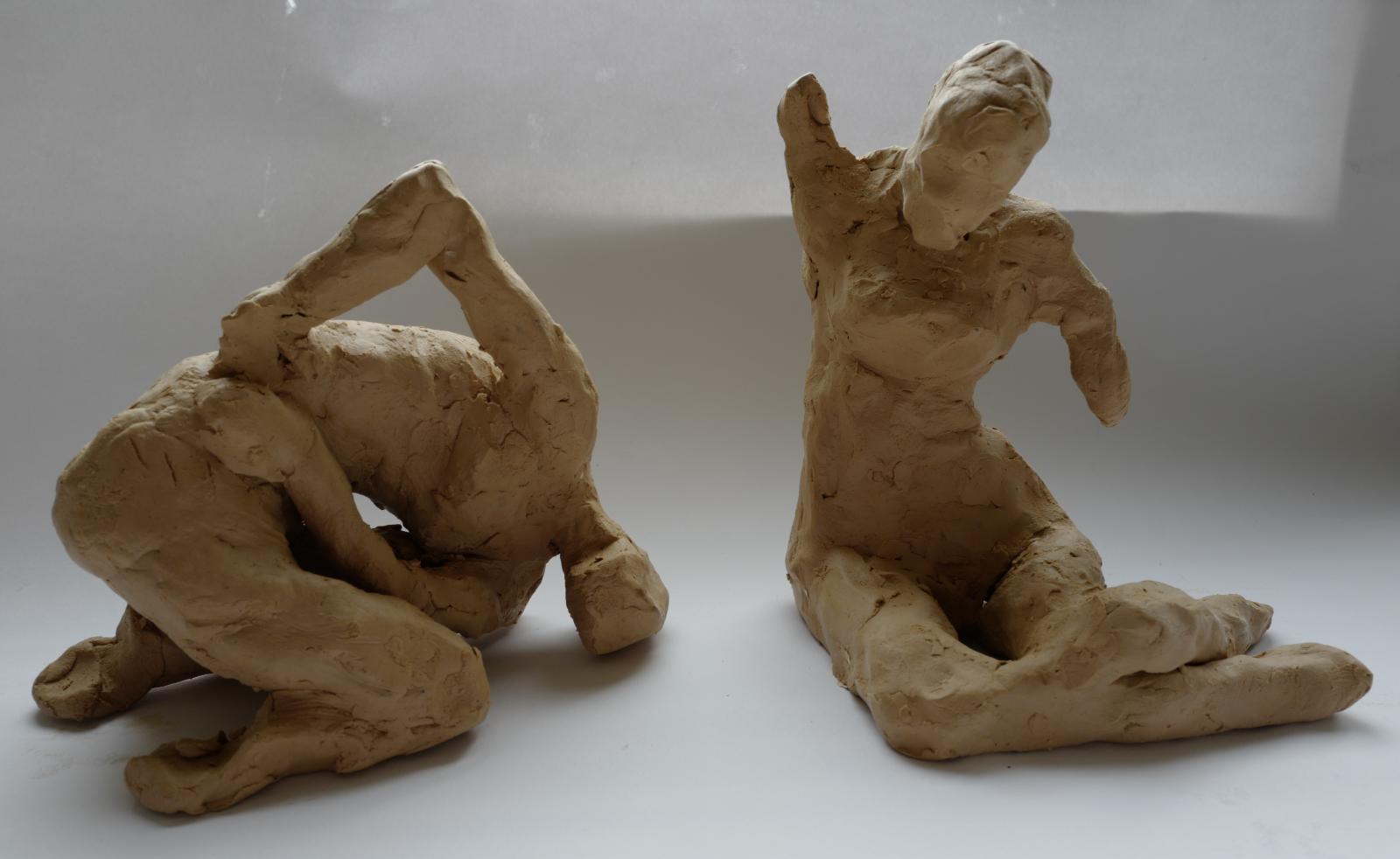#136 - The Difference Between Evolutions And Revolutions And What They Mean For Your Art Process
When is something revolutionary, and when is it evolutionary?
This image shows two gesture clay sculpture studies, each done in a twenty-minute session. More on that below.
And by doing something new, do I mean doing something new to you or something no one has ever done before? I mean something new to you. One day, you might accidentally do something no one has ever done, but that is rare.
Deciding you want to develop a drawing habit is a revolution for you, even if others have gone that path before you. Improvements to that habit are evolutions.
When the car was a new object, you had to steer it with levers. The car was a revolutionary new thing. It was a new mode of transport, it wasn’t the same as a horse. Over the decades of its existence, the design of a car has evolved a lot, and now, each year, new models do come out, but with only minor changes relative to last year’s model. They might change a material used somewhere slightly, some shape or form somewhere else slightly.
The same goes for cameras. You can see the minor adjustments they make to the overall design. The camera looked quite different when it was invented, but its design has changed significantly and only slightly from year to year.
Art education has evolved, too, but a teacher from 100 years ago would still recognize it: you have a classroom, homework, a teacher, and students. The subjects taught in class may have evolved, but a class is still a class, and a teacher is still a teacher.
Evolutions, revolutions.
But also big and small evolutions.
Digital was a revolutionary new thing, and it caused considerable evolutions in the above-mentioned: paper maps evolved to car navigation systems, self-driving electric cars are coming, analog cameras evolved to digital cameras (but try to look the same!), brick and mortar academies evolved into digital online art courses where you can now reach students worldwide.
These are evolutions. Someone from a hundred years ago would recognize a modern-day camera, a car, and art education.
I find it pleasant to try small new things in art. I started sculpting clay in a class recently, and it’s fun! We did “gesture sculpting” from model, twenty-minute poses. See the photo at the top of this article. It felt scary to start, but I soon discovered that my knowledge from drawing the figure did translate! I could quickly sculpt the chest and hip, contort them about right, add the extremities, and sense the correct proportions from instinct. It’s fun—an evolutionary step for me and a fantastic addition to my creative process. I will do much more sculpting in the future because it is fun, but also maybe to make anatomy models for reference. I could scan them into 3d models for online reference. Again, this is an evolutionary step, a small addition to my website.
I tried fountain pens recently. That’s evolutionary. The lines are thicker, but the ink flows so nicely that drawing is a joy. It also allowed me to draw with color—a small evolutionary step. I like how it makes my sketchbook pages look.
I do the same with my website. I will be so bold as to say that my workbook is a revolutionary new thing: these are the exercises I do every day—show me another teacher who does that; it’s an ongoing thing as opposed to an N-week course; it’s a memory drawing course—haven’t seen many of those. So it’s a new thing, and I like to think of it as novel.
If you are not drawing already, my warm-up exercises may be the revolution that starts you on the path of drawing every day. If you are already drawing, it may be an evolution, a small but valuable addition to your current creative process.
Why not try a small (r)evolution in your drawing practice and try the warm-up drawing exercises in my workbook ? You can do them in fifteen to thirty minutes; they make you a better artist and result in lovely sketchbook pages. I want to keep drawing after that. It’s all free.